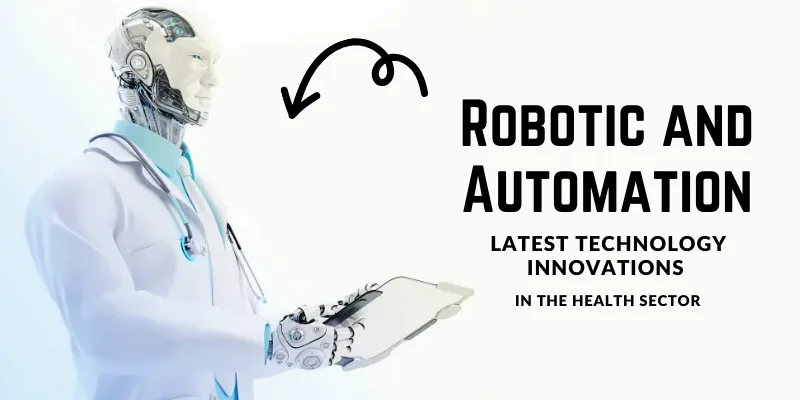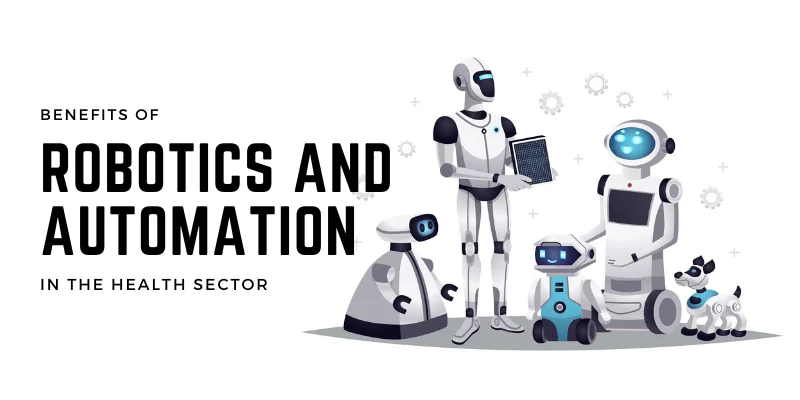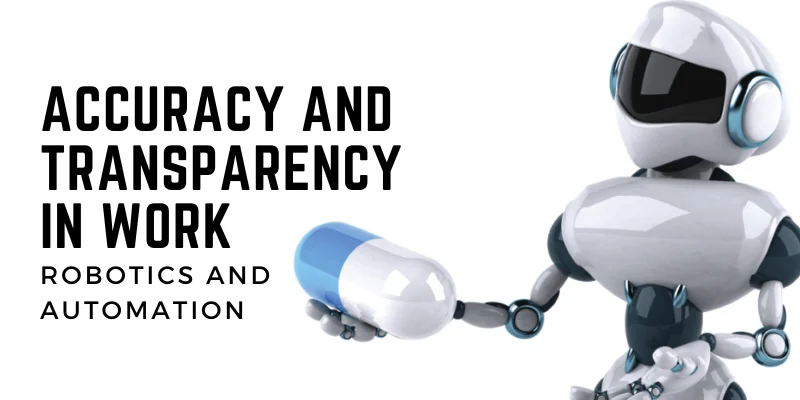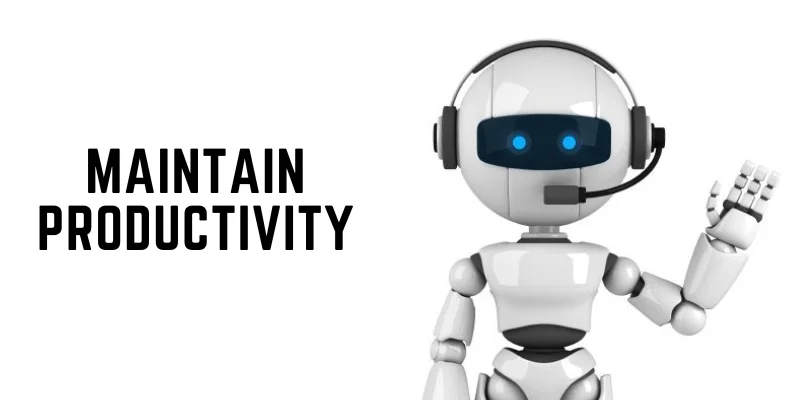Benefits of Robotics and Automation in the Health Sector

Robotics and automation in the health sector go beyond human performance and optimize the overall efficiency of the medical industry. This advanced technology automates many critical and time-consuming tasks in minimum time.
Meanwhile, the emergence of artificial intelligence in the health sector has made robotic and automation practices more efficient. Robotics helps the medical industry minimize allocated resources effectively, improve overall performance, enhance automation quality, and ultimately ensure a satisfying outcome.
Beneaits of Robotics and Automation:

In this fast world, numerous technological innovations are coming up to make human life more manageable. Automation and robotics are one of them. The benefits of robots and automated systems’ emergence in the health sector follow.
- Administrative Tasks
- Improved documentation Process
- Improve Patient’s care
- Reduce Cost
- Maintain Productivity
- Multitasker
- Maintain Secrecy
Administrative Tasks:
Robotics technology automate administrative tasks and help minimize human resource requirements. Robotics advanced systems can perform billing activities, book numerous appointments without overlapping, make reports, and maintain vast amounts of data.
Meanwhile, this robotic and automation process saves time, cuts the vast cost, and adds more value to the health sector.
For Example, The robotic automated system in medicine can book an appointment at the patient’s convenience without any human involvement and also gives reminders to ensure their presence at the respective time.
Improve documentation Process:

Previously, you needed a storage room or memory file numbers to organize the data. But still, it’s a hustle to take out required files in seconds. Surprisingly, you don’t need to be stuck in this hustle and stressful life.
Robotics and automation in health care help maintain and organize patients’ documents and history. It manages all data about their appointment time, diagnosis process, medications, recovery phase, etc. Streamlining the smart bandages also plays an important role in supporting this system.
Improve Patient’s care:

Organizations try to keep their end consumer satisfied and meet their expectations. Robotics and automated systems provide exceptional patient care, keeping them comfortable and monitoring their entire recovery phase for ultimate treatment.
Meanwhile, the robotics system tracks progress, gives reminders, sends alarms about emergencies, offers personalized recommendations according to the requirements, and much more. At the same time, through 3D printers, you can make different models to make the health system more robust.
Reduce Cost:
Surprisingly, robots and automation in healthcare reduce the operational process by almost 50%. Ultimately, it leads to a reduction in cost.
However, the machines are relatively expensive, but by installing these robotics and automation technology and working smartly, you can recover your investment quickly.
Accuracy and Transparency in Work:

Undoubtedly, robots and automated systems in healthcare provide transparent and minimal error services compared to humans. Therefore, it ensures better output and gains customer trust quickly.
Meanwhile, it organizes the data time, date, and appointment purposes. Hence, you can get the patient’s whole story in one view.
Maintain Productivity:

Humans are creative. They get bored with monotonous activities. The robots perform their repetitive activities and give more time to them to focus on creative activities. Ultimately, it helps to enhance the productivity of industry, robots, and employees.
Multitasker:

The health sector emerged with robotics technology due to their multitasking ability since the automated system performed repetitive tasks without error. The same as robots keep the whole system organized. Therefore, their multitasking skills inspire organizations to upgrade them with robots and automation systems.
Maintain Secrecy:
Previously, maintaining privacy in health organizations was a complicated task. At the same time, secrecy and privacy are the prominent elements of any organization. Surprisingly, all the data remains safe and secure through robots and automation systems. Now, there is 0ero risk of information leakage from one department to another because all the data is documented and safe.
Types of Robots:
Technology is continuously evolving, some of them wearables while some are standard. The world has many categories of robots, but the following are the prominent robots required in every secretary, especially in health care.
- Service Robots
- Special Robots
Service Robots:

Service robots are primarily programmed to help with daily tasks. Undoubtedly, they relieve the burden of healthcare staff and teams because they work as their replacement. Surprisingly, some of them work in auto mode and submit their work report when they complete their tasks to ensure accountability. Following are the prominent activities of Service Robots.
- Study patients’ progress
- organize their rooms
- Track medicine
- order required medications
Since service robots perform daily tasks, healthcare staff get time to focus on other activities. Therefore, It helps to enhance the R&D department. Surprisingly, they also help in cleaning and disinfecting activities.
Social Robots:

Social Robots are directly integrated with humans. These are known as friendly robots. They maintain an extra caring and supportive environment for human beings. Surprisingly, They are programmed with empathy. Hence, they encourage patients to continue their treatment and give alarms and reminders about their healthy routine.
The following are the key features of Social Robots.
- Now you don’t need to find the right place or wards. Social Robots give visitors and inside staff value-added directions about the relevant path.
- Through their strong program, they improve the mental well-being of patients and keep them engaging and stress-free activities.
In short, these latest industry trends help to grow the overall health industry and maintain the reliability of its customers.
Final Verdict:
Undoubtedly, robotics and automation technology significantly impact the health sector to optimize the overall industry. Also, they have a fantastic future to grow with the advancement of machine learning, data analytics, and other technologies.
FAQs:
How are robotics used in the health sector?
Undoubtedly, these advanced technologies boost the overall efficiency of the health sector. Robots perform significant roles by automating administrative tasks, like booking appointments, keeping records of patients, and executing complex and critical surgical activities.
What are the benefits of using robots and automated systems in the medical industry?
Surprisingly, robots and automated systems redesigned the overall strategy of the health sector. Both technologies help to enhance performance, patient care, and keeping sensitive data organized.

Similar Posts
What is a Virtual Appointment with a Doctor?
Practical Study Tips for High School Students Using AI
Why Grooming Tools Are Getting Quieter Every Year